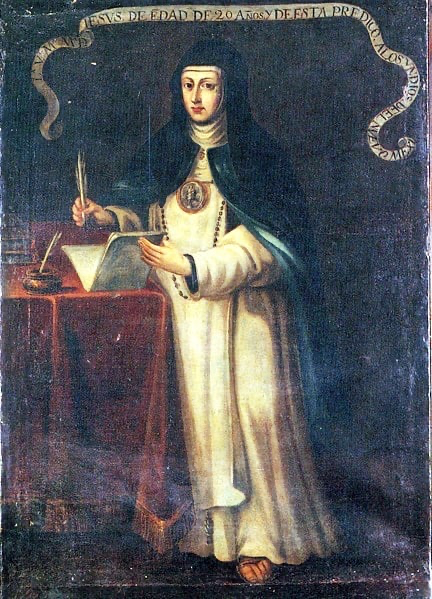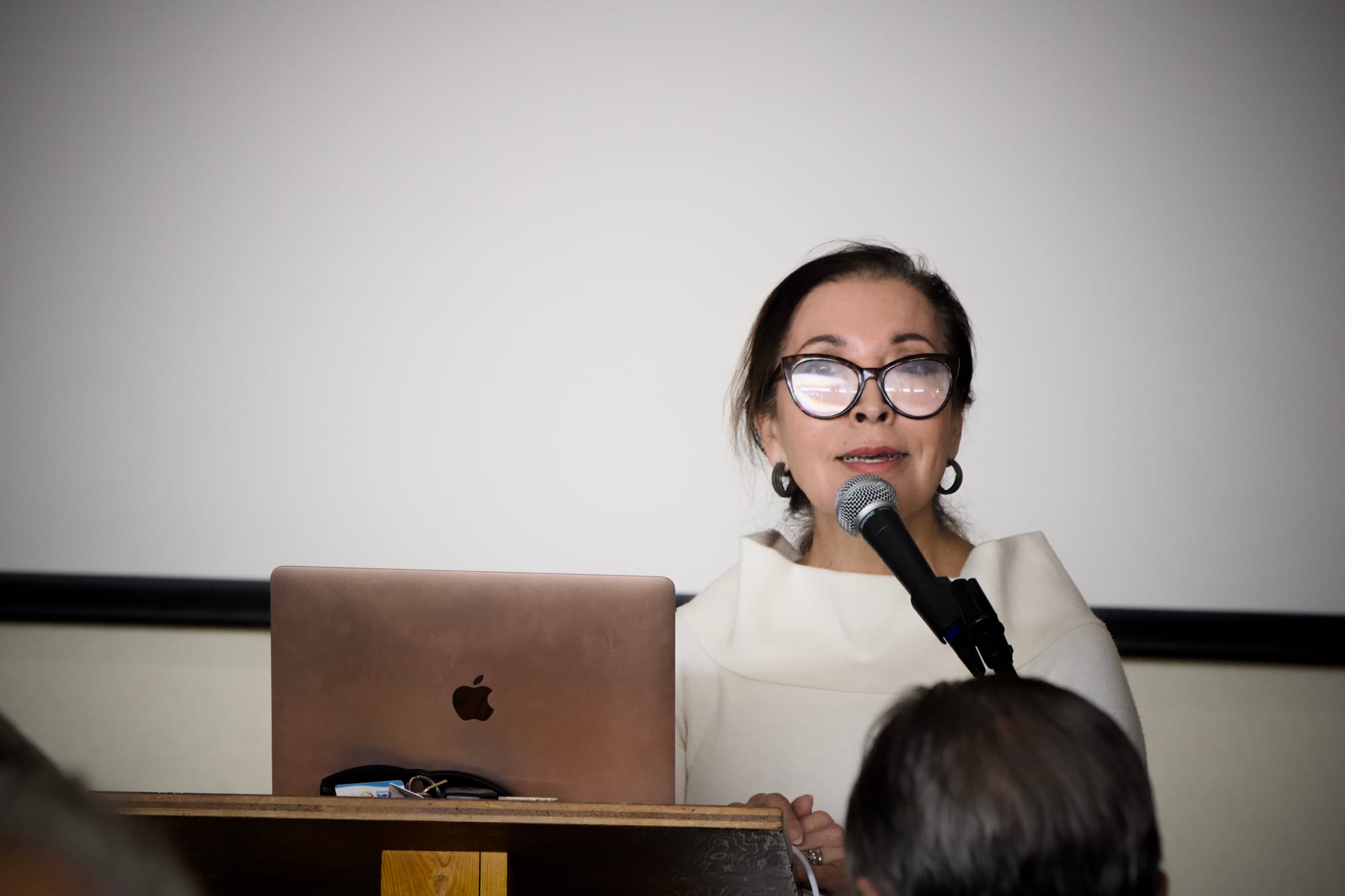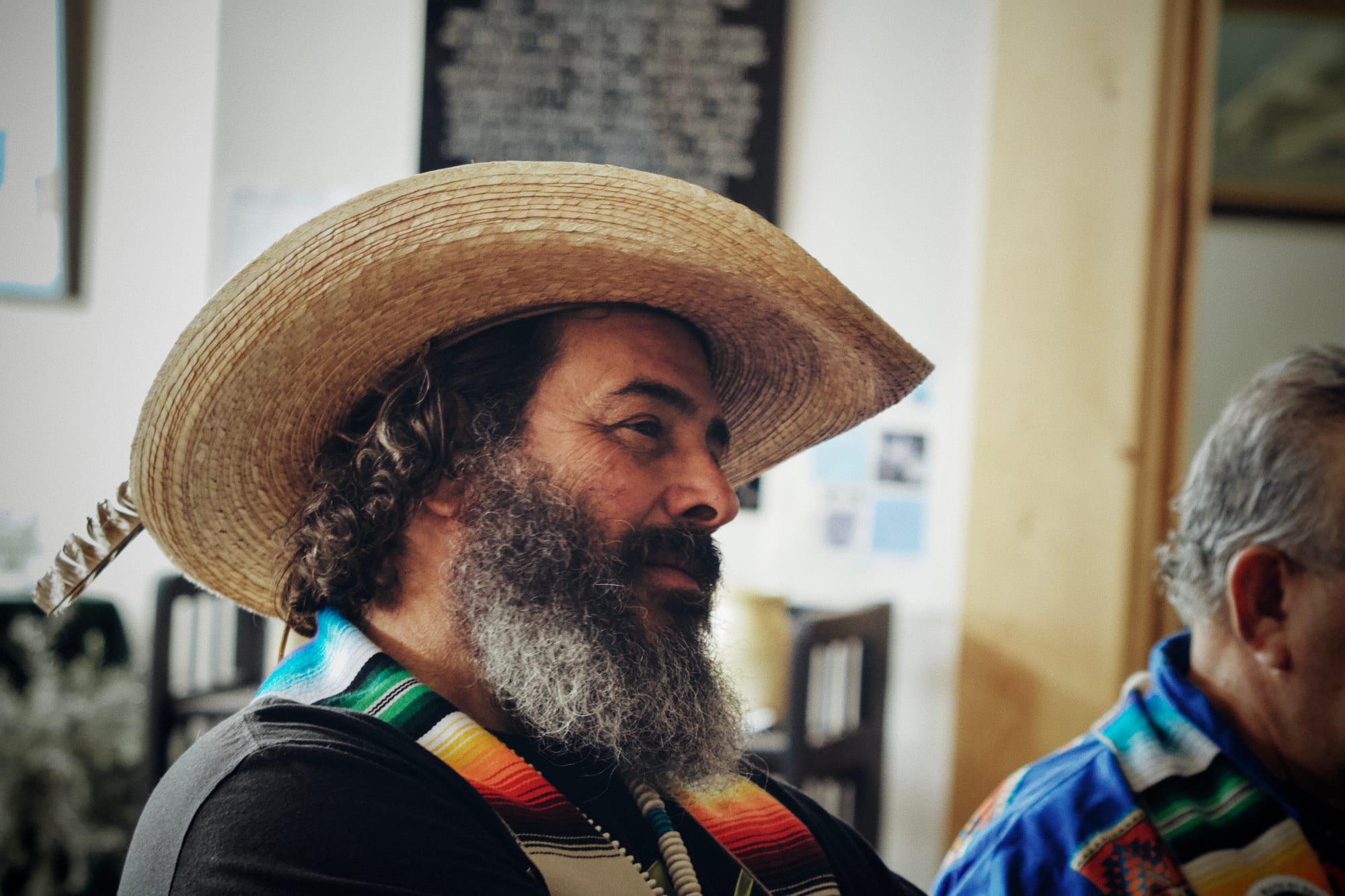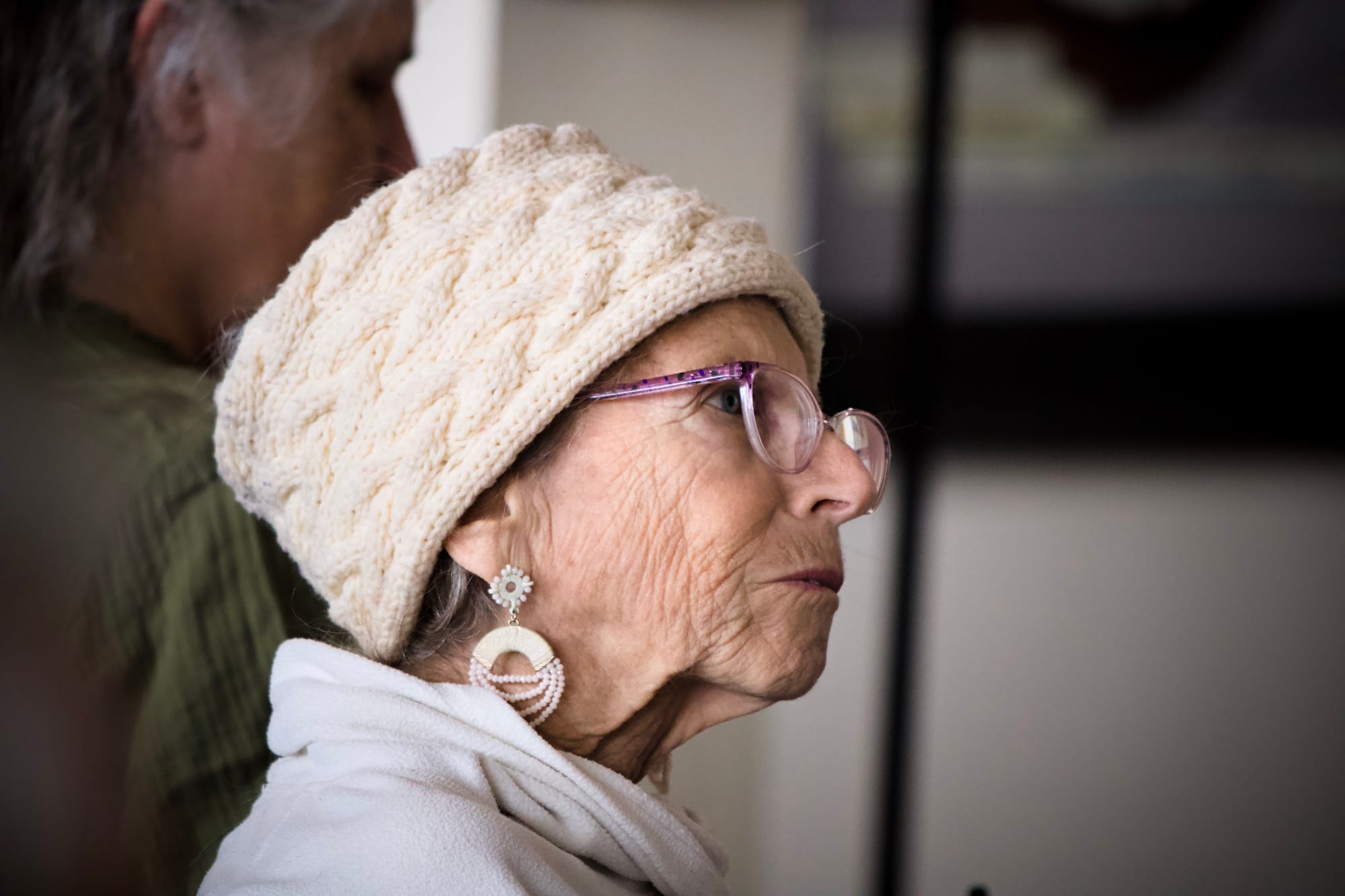The Blue Nun's Story

The story of Venerable María de Jesús de Ágreda, OIC, born María de Coronel y de Arana in 1602, begins in Ágreda, in the Northwestern portion of Spain known as Castilla y León. Like New Mexico, the region is arid and mountainous, with a steep canyon, Hoz de Llánaves, that cuts through the region like the Rio Grande Gorge does here. If one is a follower of the Roman Catholic tradition, María’s story is more closely tied to New Mexico.

Martha Vera shared Maria’s story with the audience at the Manzano Mountain Art Council on Saturday, February 15, 2025. Vera, an honorary consul of Spain, has had a longstanding interest in María de Jesús de Ágreda. She recounted to the audience her experiences traveling to cloistered convents in Spain for historical research on María de Jesús de Ágreda.


Attendees of Martha Vera’s Lecture regarding María de Jesús de Ágreda - Todd Brogowski/Mountainair Dispatch
María de Jesús de Ágreda was part of the Roman Catholic’s tradition of mysticism, having entered the Order of the Immaculate Conception (a now-defunct offshoot of the Franciscan religious order) at the age of 16 in 1619. During this period, María claimed to have experienced “bilocation,” a phenomenon where she claimed to be present in two places simultaneously. Notably, she asserted that she appeared in New Spain (modern-day Mexico, New Mexico, and Texas), instructing indigenous peoples in Catholicism without leaving her convent in Spain. These accounts led to her being referred to as the "Lady in Blue." Between 1620 and 1631, María's bilocation experiences reportedly involved preaching to the Jumano, the Caddo Confederacy, and other Native American tribes, in locations including Isleta Pueblo, Quarai, and Gran Quivira. See Marilyn Fedewa, Maria of Agreda: Mystical Lady in Blue (University of New Mexico Press 2009) (click here to purchase on Bookshop.org) Spanish missionaries later claimed that they found that these Indigenous communities had prior knowledge of Christianity, which they attributed to María's mystical visits. Ibid.
María’s family was wealthy and connected to the king of the newly united Kingdom of Spain, Phillip IV. This connection led to a series of correspondences between María and Phillip IV regarding religion and governance.
While the purported bilocation of María de Jesús de Ágreda may generate the most interest in her story here in New Mexico, it was María’s writing that attracted the attention of the Grand Inquisition in 1628. In 1622, María de Jesús de Ágreda published The Mystical City of God, a six-volume work which included her claimed revelations from the Virgin Mary regarding the theology of the Blessed Trinity, the miracles performed by Jesus Christ, and revisions to the Catholic theology regarding Jesus Christ’s Passion, Resurrection, and Ascension. The Inquisition began investigating Maria’s book in 1628, and, under the authority of Pope Innocent XI, condemned as heresy in 1681. Due to political pressure from King Phillip IV, this condemnation did not ban the reading of The Mystical City of God in Spain. Ibid.
Vera’s lecture on María de Jesús de Ágreda is part of a series of lectures being presented by the Manzano Mountain Art Council (disclosure: the Manzano Mountain Art Council is an advertising client of the Mountainair Dispatch), through the assistance of New Mexico Arts and the National Endowment for the Arts, over the course of February and March. Most recently, on Saturday, February 22, 2025, Dixie Boyle and Donna Deiner presented Women of the West - A Living History of the Pioneer Women of Torrance County. The next Manzano Mountain Art Council event will be Ghost Towns of New Mexico, hosted by John Mulhouse, author of Abandoned New Mexico. The presentation will be at the art council’s center at 101 East Broadway on March 1, 2025, at 2:00 PM.
Update 20250305 - Corrected minor typo.
